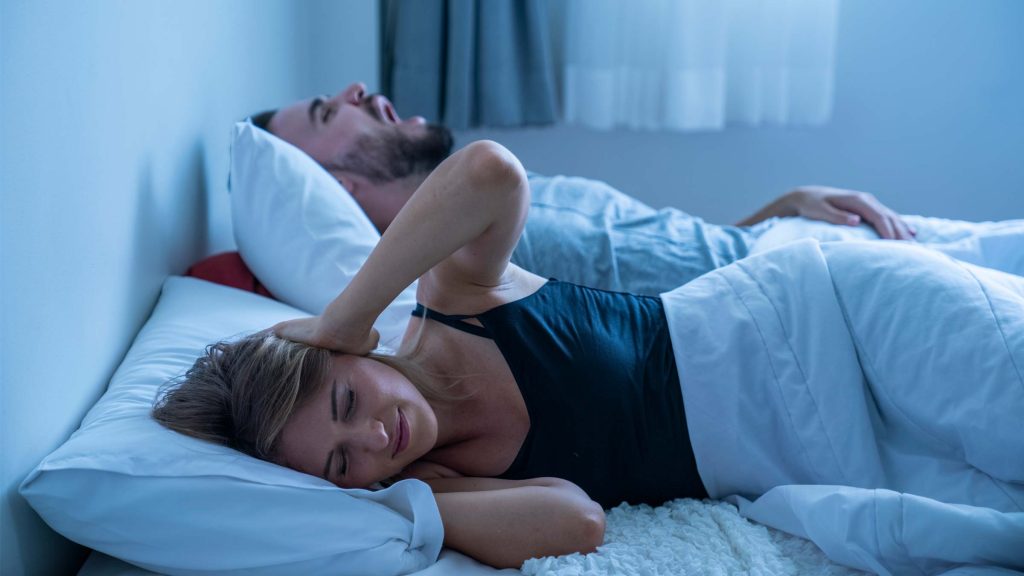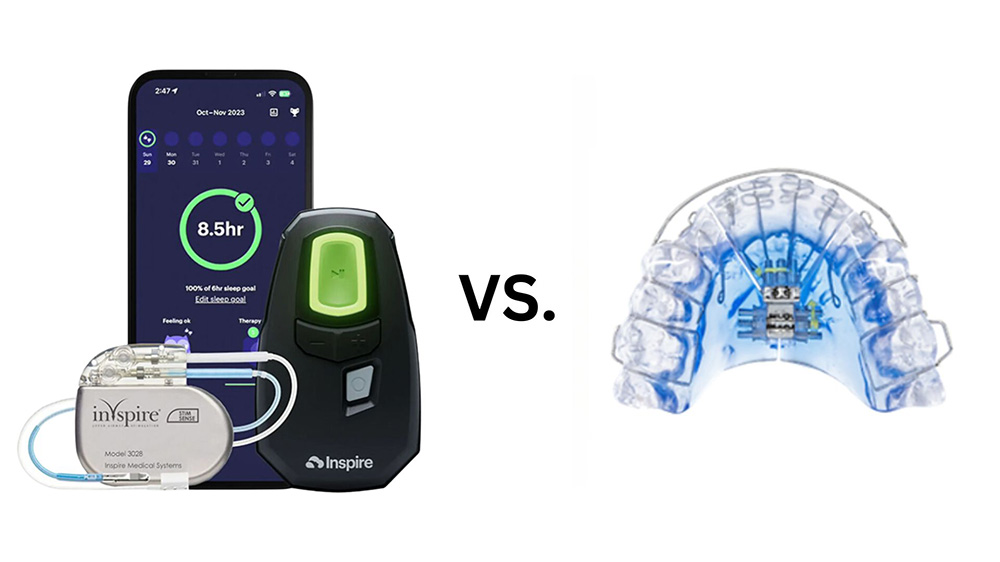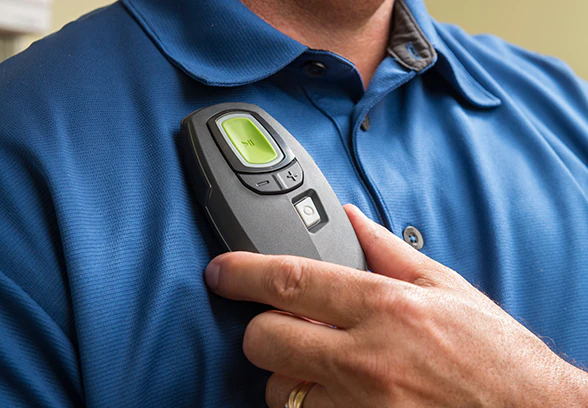
Sleep apnea, a disorder characterized by repeated breathing interruptions during sleep, affects millions worldwide. There are two primary types: Obstructive Sleep Apnea (OSA) and Central Sleep Apnea (CSA). In both types of sleep apnea, people can experience moderate to severe interruptions in their sleep. In moderate-to-severe Obstructive Sleep Apnea, the airway becomes blocked, often by the tongue or soft tissues in the throat. In CSA, the brain fails to send proper breathing signals to the muscles controlling respiration. Untreated, sleep apnea can lead to excessive daytime fatigue, cognitive impairment, and increased risk for serious health issues like heart disease and stroke.
Traditionally, OSA has been treated with Continuous Positive Airway Pressure (CPAP) therapy and oral appliances called mouthguards. CPAP devices deliver a steady flow of air through a mask worn during sleep, keeping the upper airway open during sleep. Mouthguards reposition the jaw and tongue to prevent airway obstruction. For CSA, common treatments include addressing underlying conditions and the use of supplemental oxygen or adaptive servo-ventilation devices.
While effective for many patients, these conventional therapies have limitations and are not for everyone with sleep apnea. CPAP machines can be cumbersome, noisy, and uncomfortable, leading to poor compliance. Mouthguards may cause jaw discomfort, tooth movement, and require frequent adjustments or replacements. Finding an effective sleep apnea treatment can also be challenging.
In response, medical innovators have sought new solutions to address sleep apnea challenges, leading to the emergence of novel therapies like Inspire treatment for both types of sleep apnea.

The Inspire device is a groundbreaking treatment designed to treat obstructive sleep apnea at its physiological source. It involves having a device implanted that delivers mild electrical impulses to the hypoglossal nerve, which controls tongue movement. These impulses gently stimulate the tongue muscles, causing the tongue to move forward during sleep and preventing airway obstruction. The way this device works results in less sleep apnea events during the night and better sleep overall for the patient. Upon waking, the Inspire user utilizes a wireless remote to simply turn off the device before going about their day.
The Inspire system is implanted during a same-day, outpatient surgical procedure. This requires a same-day surgery to implant the device under the skin in the upper chest area, while a breathing sensor lead monitors respiration patterns. Additionally, a stimulation lead is implanted under the chin, connecting to the hypoglossal nerve that controls tongue movement. The entire process is minimally invasive and boasts an extremely short recovery period.
In contrast, mouthguards or oral appliances work by physically repositioning the lower jaw to move the tongue forward, preventing the airway from collapsing during sleep. Some are available over the counter, while others are custom-fitted and adjusted by dental professionals. While effective for many OSA patients, mouthguards require nightly use and periodic replacement or refitting.
There are a variety of reasons why people might choose Inspire for the treatment of obstructive sleep apnea. For example, Inspire is a permanent solution and eliminates the need for sleep apnea surgery. Unlike mouthguards requiring nightly use, Inspire provides a permanent OSA treatment once implanted. The Inspire implant is also minimally invasive. Though the same-day surgical procedure, Inspire implantation is considered to have a relatively short recovery time of just 2–3 days. Another reason that people might choose getting the Inspire sleep apnea device is that the Inspire battery lasts up to 11 years before potential replacement, far outlasting mouthguard lifespans. Ease of use can also be a great reason for choosing Inspire. Operating the device is simple – turn it on before bed, off after waking – without nightly adjustments.
There are a lot of great reasons why a good candidate for Inspire might choose this treatment option. However, it would be remiss to not mention some of the risks associated with the Inspire sleep apnea treatment. As with any surgery, Inspire implantation carries inherent risks like infection or complications during the procedure. Along with the inherent risks of surgery, patients may also experience temporary discomfort. Some swelling, pain, or other discomfort may occur in the implantation area during the initial recovery period. In rare cases, tongue weakness, numbness, or impaired swallowing may temporarily occur due to nerve stimulation.
Now, to some people, the cons listed above might be fairly concerning. However, there are many reasons that the benefits of Inspire therapy outweigh the potential risks. Comfort is one of the main benefits of Inspire. After the brief recovery period, Inspire eliminates the nightly discomfort and hassles of mouthguards, potentially improving compliance with the treatment and boosting sleep quality exponentially. The convenience of the treatment is another great reason to look into Inspire treatment further. With no need for adjustments or replacements, Inspire saves patients time and inconvenience compared to mouthguards. The consistency and quality of treatment that Inspire brings, by keeping the airway open through neurostimulation, allows uninterrupted OSA treatment throughout the night. And, unlike other treatment methods that can’t be customized for comfort, Inspire allows minor therapy adjustments through the handheld remote for optimal tongue positioning and breathing.
While any surgical procedure to implant the inspire device involves some risks, the potential long-term benefits of Inspire are compelling for many OSA patients struggling with CPAP intolerance or dissatisfaction with mouthguards. The risks associated with Inspire are considered minimal. Consultation with a sleep specialist is essential if Inspire is to be explored as an appropriate therapy option.

Inspire Technology has emerged as a promising breakthrough in moderate-to-severe obstructive sleep apnea management. When you turn on the device it will directly keep open your upper airway during sleep through targeted hypoglossal nerve or upper airway stimulation, and it addresses a root cause of obstructive sleep apnea. This surgical implant provides a permanent treatment option without the nightly hassles of conventional therapies.
Though the surgical implantation procedure carries inherent risks, Inspire’s minimally invasive nature and the expertise of trained surgical teams help to mitigate potential issues. The prospect of drastically improved sleep quality, increased treatment compliance, and reduced long-term health impacts make Inspire an enticing option warranting careful consideration.
As with any therapy, patients must weigh the benefits and risks through open discussions with their physicians. However, for those struggling with OSA despite attempts at conventional treatment, Inspire offers the potential to finally achieve restorative, uninterrupted sleep and improved overall well-being.
If you want to get the Inspire as a treatment option for obstructive sleep apnea, the first step is to consult with a sleep medicine physician or an ENT (ear, nose, and throat) doctor. These specialists can evaluate your condition, review your medical history, and determine if you meet the criteria to be a candidate for Inspire therapy. They will likely want to review any previous sleep studies or have you undergo additional testing to confirm the severity of your sleep apnea.
If deemed an appropriate candidate, your doctor will provide information on Inspire-certified surgeons and facilities in your area that offer the implantation procedure. Integra Health PC can provide people with sleep apnea in the Inland Empire and Orange County, California areas with an innovative sleep study to determine what is the best solution for your sleep issues. It’s important to select an experienced surgeon who has received specialized training in the Inspire implantation process. Your doctor and the surgical team can also help guide you through the insurance approval process, as the cost of Inspire is covered by many insurance providers as well as Medicare.
While coverage criteria can vary by insurer, most requirements for Inspire include documentation showing that CPAP or other conventional therapies have been unsuccessful or poorly tolerated. Some insurers may also require that your sleep apnea meets certain severity thresholds based on diagnostic testing results. The surgeon’s team will assist in submitting all necessary documentation and preauthorization requests to maximize the chances of your Inspire procedure being covered.
Sleep apnea’s impact on your quality of life and overall health are far-reaching. While conventional CPAP therapy and mouthguards have helped countless patients, their limitations have fueled a quest for innovative solutions to improve obstructive sleep apnea treatment and sleep patterns in sleep apnea patients.
The continued evolution of medical technology brings hope for more effective, patient-friendly management of sleep disorders like apnea. Innovations like Inspire are paving the way toward a future where the debilitating effects of disrupted sleep may become a relic of the past. If you are interested in Inspire for you, please contact us to learn more about having surgery to implant the Inspire for the effective treatment to help with the very common sleep disorder.